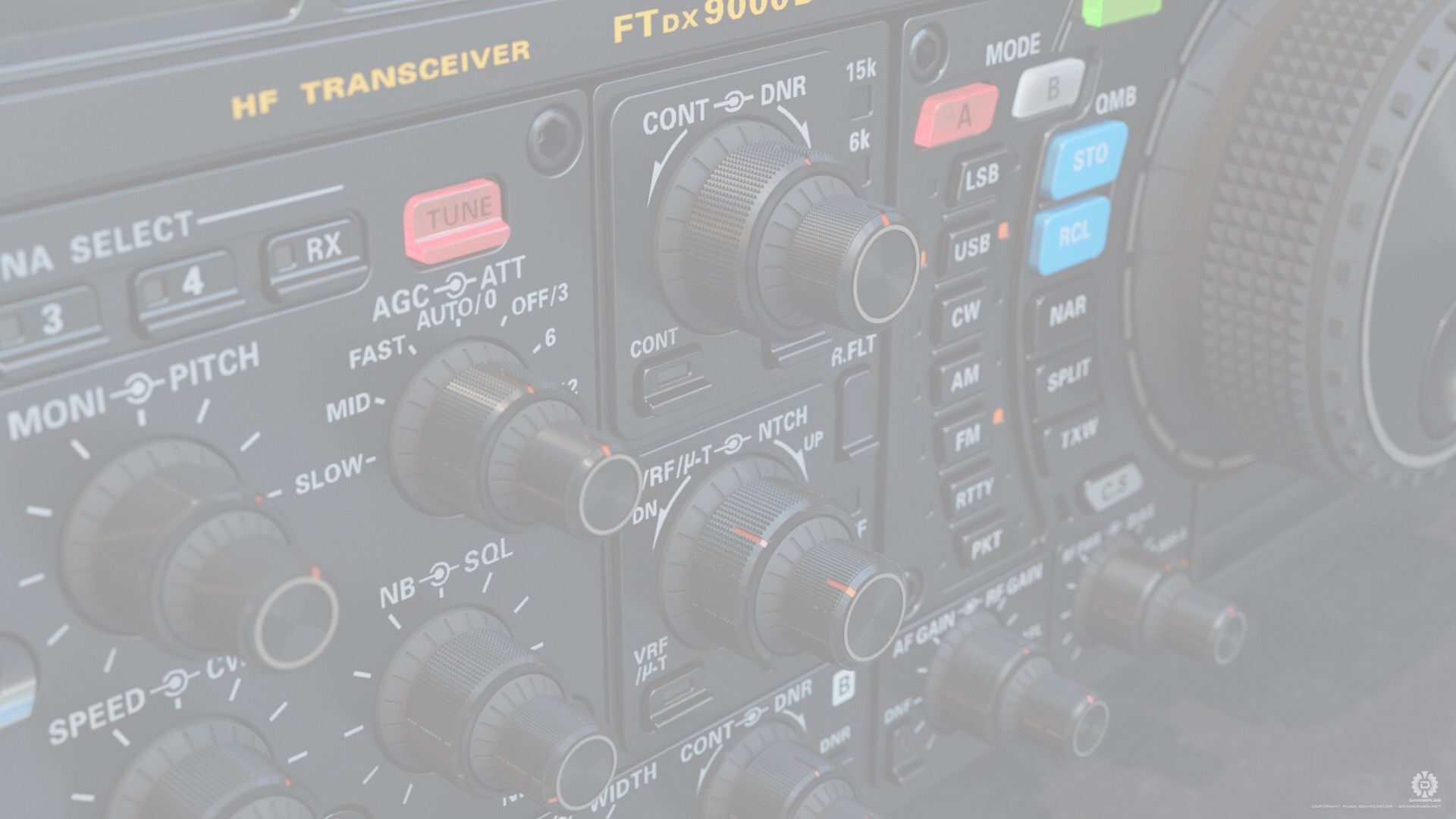
END FED HALF WAVE ANTENNA
(EFHW)
Building An Antenna And Testing
The best way to test is to build an antenna and radials(s), connect the FRC100W with coax and then test the complete antenna system.
Make A 40m/20m/15m/10m Antenna and radials
-
Cut 20m of wire, connect to the Red banana post.
-
Mount the FRC100W up about 1.5m off the ground.
-
Connect a coax cable to the FRC100W.
-
Pull the antenna wire up high in the air, away from obstacles etc.
-
YOU MUST USE RADIALS! The 1:1 in the box makes this mandatory.
-
We suggest using 2 off 2m long radials. Connect these to the Black post.
-
Keep the radials and the coax separated if possible.
Testing
-
Connect an antenna analyser and sweep your antenna looking for lowest SWR points.
-
If you use your transceiver to sweep the antenna use low power.
-
You may have to shorten the antenna a little.
-
The bands may not line up perfectly - this is normal, (we have antenna solutions for this).
-
We find that best SWR on 40m is about 1.6:1 and on 20m is 1.2:1 when mounted as an inverted- L and an elevated feed point. This will work very well into most radios (IC-705 / IC7-705, FT-897D etc)
-
If you mount the antenna lower, closer to the ground, the SWR will change and may in fact become very low.
Final Build And Use Notes
-
Do not over-tighten screws. Do add extras water protection if used outside
-
The box and sealing gasket is splash proof.
-
If you leave it out in the weather, do provide extra rain protection.
-
Tighten the binding posts firmly else they will come loose.
-
You must use radials. The 1:1 balun isolates the coax from the transformer.
-
We’ve found that 2 radials, each 2m long are ideal for a 40m/20m/15m/10m antenna.
-
Keep the radials away from the coax. This helps reduce common mode current.
About End Fed Half Wave Antennas and the FRC100W
Most EFHW UnUn's don't have a 1:1 - then you find you need a 1:1 in the coax somewhere to tame the common mode current. That adds much more cost, extra connectors and cable issues. Plus it is annoying!
That is why the 1:1 is inside the FRC100W enclosure.
Be aware though that the 1:1 will not eliminate common mode current. Some will still be present by being picked up by radiated signal coupling to the coax. We have found it to be quite low - it is coax and installation dependant so a precise measurement is meaningless.
We have found that radios that would otherwise demand a 1:1 (with UnUn's that don't have an inbuilt 1:1) will work just fine with FRC100W. Two examples are the IC705 and the IC703 - both of which can be susceptible to common mode current malfunction.
Having the 1:1 in the box does have some other consequences;
The coax does not form part of the antenna any more. This means you can use different lengths and it won't affect your antenna as much.
Next, because the coax is not part of the antenna, you MUST use radials - else the antenna system won't work - the SWR will be terrible and it will be deaf as a post.
If you drape the radials over the coax, it will increase the common mode current. Yes, the radials do radiate just a little.
Next, and maybe peculiar to us, we recommend using 2 radials, not just 1. Both cut to the same length at 1/20th the length of the longest band you are using. For example, for 40m, we use 2 off 2m long radials. We found the SWR was a little better this way.
Efficiency and pattern with radials.
The pattern that the antenna has will benefit, and signal too, by having the 1:1 inside the enclosure..
This is because the radials will be in the air and radiating. Without the 1:1 the coax is part of the antenna and laying on the ground and radiating into the ground - losing signal and changing the pattern.
For the most efficient antenna (best signal)
We like the inverted-L. Elevate the UnUn about 1.5m in the air, the 2 radials coming out to opposite sides, then take the antenna up to 7 or 8 or 9m high and keep the flat top as high as possible.
Other mounting, like laying the radials on the ground will work fine, and low sloper, but will have reduced signal strengths.



